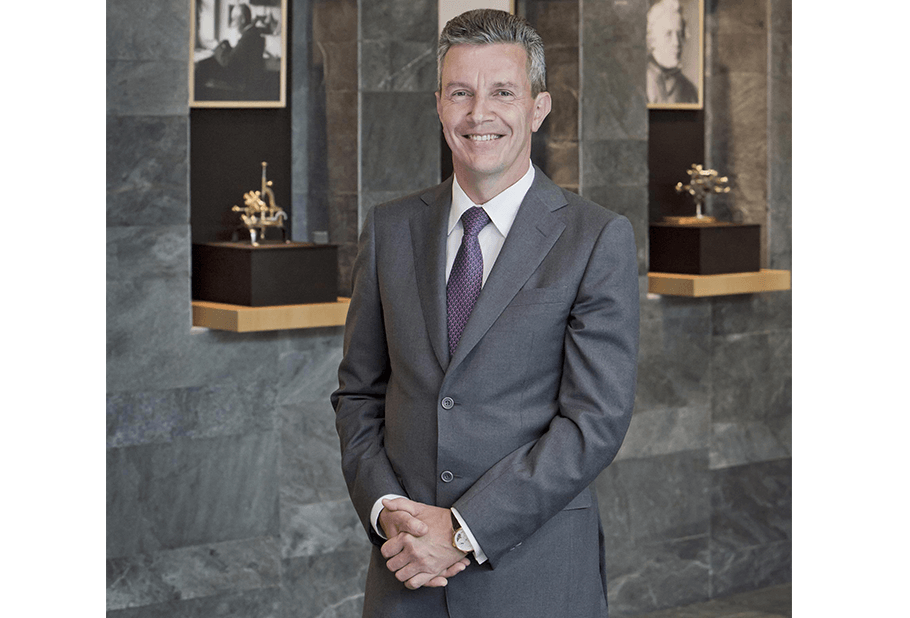Jaeger-LeCoultre makes almost 45% of its revenue from women’s watches. This enviable figure owes much to the delightful and rectangular Reverso. Its round alter ego goes by the name of Rendez-Vous, a collection that has grown over the past several years, particularly with the arrival of highly technical complications, and increasingly ornate and precious decorations. According to Janek Deleskiewicz, who is head of creation for the brand, numerous factors that relate as much to the product itself as to the message that surrounds it influence the success of a timepiece for women who, he observes, expect their watch to work for them. A savvy designer must therefore consider the role women play and the era in which they live, but most importantly capture their imagination with a desirable object.
Janek Deleskiewicz, Artistic and Design Director, Jaeger-LeCoultre: There’s no actual recipe. In today’s world, customers happily borrow style cues from the opposite sex, which could cause confusion were we to persist in this direction. Certain parts of the world turn these codes around. An Indian man wouldn’t think twice about wearing a watch with a diamond bezel, for example. For a woman’s timepiece to be right, it has to relate to a particular era or to the important moments in its owner’s life, which tend to change over time. A young woman doesn’t share the tastes or want the same things as a mother or an older woman. Men, in comparison, seem to live more linear, more predictable lives. A woman’s watch is also part of a global context, namely women’s place in society at a given point in time. It’s a highly subjective and subtle process. Influences can come from philosophy, films or books. It takes a powerful creative force to identify these factors and transform them into ideas.
Historically, the wristwatch can be considered a symbol of emancipation and power. This goes back to the early decades of the twentieth century, when women took on traditionally masculine roles to replace the men who had been sent to fight, or had come home wounded. Women then entered the worlds of business and banking. Still today, the distinction between male and female roles is constantly shifting, and increasingly so. For example, the famous Rolex Daytona chronograph is very much a man’s watch yet a lot of women wear it. Of course, this doesn’t mean women necessarily go looking for masculine symbols as a means of asserting themselves. The Reverso, a unique, authentic, classic watch, is in great demand and has been for a number of years. The watch also represents European culture and everything this implies in terms of history and lore. That is should symbolise this civilisation can resonate with confident women from non-western cultures.
Women seem to take a very pragmatic approach in that they expect their watch to provide genuinely useful functions. A chronograph isn’t the first thing they look for, for example, while a young Asian woman will want her watch to display a second time zone. Let’s not forget that this is a generation that travels more than before. Women customers are also highly attentive to perceived quality and are willing to spend more for it. A watch must be easy to wear, and include interesting and enhancive details. Women are also receptive to the different arts which contribute to the watch’s decoration. A finely crafted dial, perhaps set with precious stones, counts for a lot. There is always that all-important first glance and the spark that comes with it. Women like to personalise their watch too, in particular the strap, and a great many small, independent firms keep going thanks to this demand.
The first, and at that time only, Rendez-Vous watch made its debut in the 1990s. It took its name from a function that marked any hour of the day, at that time with a diamond. A new collection was launched in 2012 that borrowed only the name of its predecessor and this idea of highlighting a particular moment in the day. Today it can be seen as the equivalent of the Master collection for women, which is one reason why we have extended the collection to include technically complex models. Its design combines elements of Art Nouveau, such as the dial decoration, with Art Deco in the shape of the case or lugs for example, two hallmarks of Jaeger-LeCoultre design. Lastly, new technologies have made it possible to introduce materials such as aventurine glass. Rendez-Vous is a fine contemporary representation of the brand’s history.
The launch is indeed a crucial operation for a women’s watch. The response it elicits among journalists, women journalists in particular, counts for a great deal. Nothing can replace personal contact with these journalists, and special efforts are made to this end. Internet isn’t the be all and end all. Much of the work takes place elsewhere. We are working for the future, which means we must pay careful attention to the tastes of young women today.















